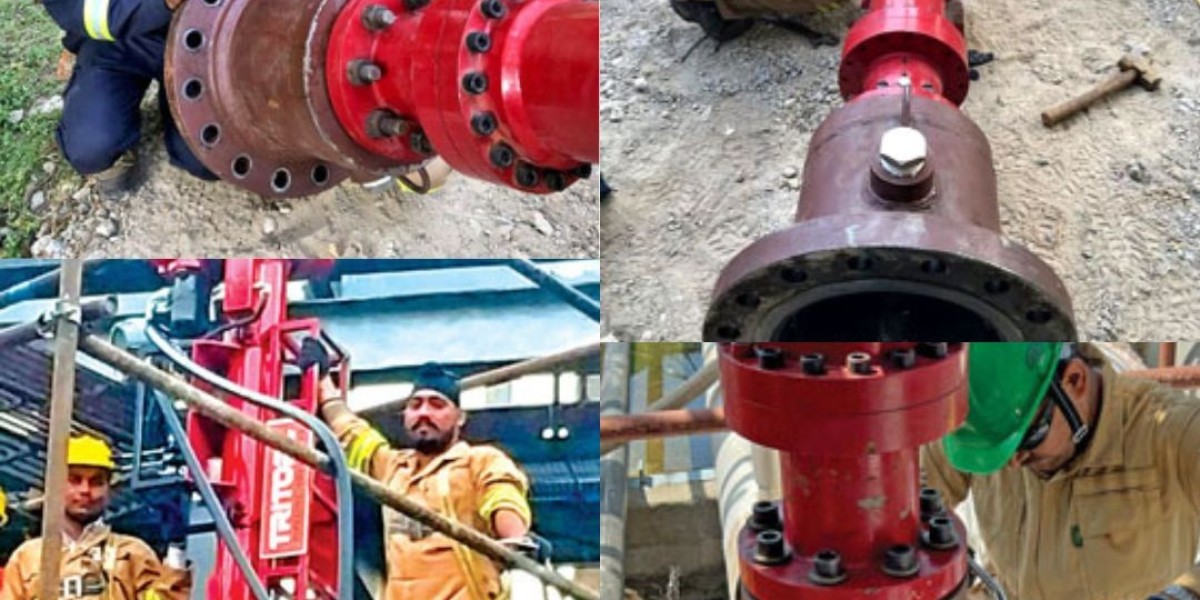Hot tapping, also known as pressure tapping or under-pressure drilling, allows for maintenance, repairs, and modifications to be carried out on a live, pressurized system without the need for shutdowns.
How Hot Tapping Works
Traditionally, industries have been known to shut down their systems for upgrades or modifications. Hot tapping eliminates drawbacks such as downtime & production losses, enabling operations to continue seamlessly while critical work is performed.
As simple as that sounds, hot tapping services are an advanced technique that requires specialized equipment. The process involves the use of specialized equipment designed to penetrate the pipeline or vessel wall while maintaining system pressure.
Some of the key components of hot tapping include a tapping machine, a fitting or tapping valve, and a drilling mechanism. You will need the tapping machine to securely mount onto the pipeline, which allows you to create a sealed environment.
The drilling mechanism, often a drill or cutter, is also required to penetrate the pipe and create an opening. Once the desired modification is completed, the tapping valve is closed, and the tapping machine is removed leaving behind a secure and functional branch connection.
Ensuring Safety While Hot Tapping
It is worth noting that not all processes or industries allow for hot tapping when replacing or maintaining industrial systems. Since hot tapping is done on live systems, industries need to prioritize some of these safety precautions:
· Thorough Risk Assessment: Before initiating any hot tapping procedure, a comprehensive risk assessment must be conducted. This assessment should consider factors such as system pressure, temperature, fluid properties, and the specific characteristics of the equipment being tapped.
· Use Qualified Personnel: Hot tapping should only be performed by trained and certified personnel with extensive knowledge of the process and its associated risks. Technicians should be well-versed in the equipment used, emergency procedures, and safety protocols.
· Equipment Inspection and Maintenance: The equipment used in hot tapping, including tapping machines, fittings, and drilling tools, must undergo rigorous inspection and maintenance routines. Be sure to conduct regular checks to ensure that the equipment is in optimal condition
· Pressure Control: You should also ensure there are pressure relief devices and valves are in place and regularly tested to prevent over-pressurization. Technicians should closely monitor pressure levels throughout the tapping process and be prepared to take corrective action if deviations occur.
· Isolation and Containment: Implementing effective isolation measures is crucial to contain the process within a designated area. This often involves using proper isolation valves and ensuring that the surrounding environment is adequately sealed. Containment barriers and shields can also provide an additional layer of protection, preventing the release of hazardous substances in the event of an unforeseen incident.
· Emergency Response Planning: Despite meticulous planning and execution, emergencies can still arise. A robust emergency response plan must be in place, detailing procedures for various scenarios, including leaks, equipment failures, or unexpected changes in system conditions.
Industrial Applications of Hot Tapping
There are several industries and enterprises that could potentially benefit from hot tapping. Some of the industrial application of hot trapping include:
Modifying Pipelines
The oil and gas industry is one of the major users of hot tapping to modify existing pipelines. It allows for the installation of additional branches, valves, or sensors without interrupting the flow of the main pipeline. This flexibility is invaluable for adapting to changing operational requirements.
Repair and Maintenance
It is not uncommon for equipment and pipelines to require regular maintenance for optimum performance. Hot tapping Machine allows technicians to perform these tasks without shutting down the entire system. Whether it's fixing leaks, replacing valves, or conducting inspections, hot tapping ensures that operations can continue without disruptions.
Installing Monitoring Devices
With the increasing emphasis on data-driven decision-making, the installation of monitoring devices is crucial. With hot tapping, you can add sensors and monitoring equipment to existing pipelines, facilitating real-time data collection and analysis.
Interruptions in major maintenance or industrial processes causes significant loss of time and resources. With hot tapping, industries can finally ensure that the production process continues without disruptions. The good thing is that you can work with our hot tapping experts who recently completed a project involving more than 29 taps. Just take the first step and contact us to find out how you can also adopt hot tapping in your business.








